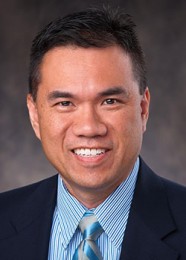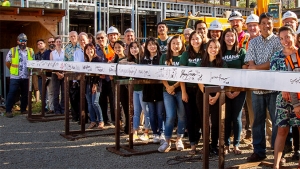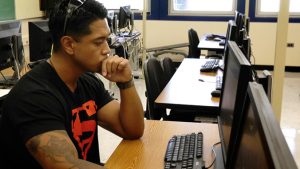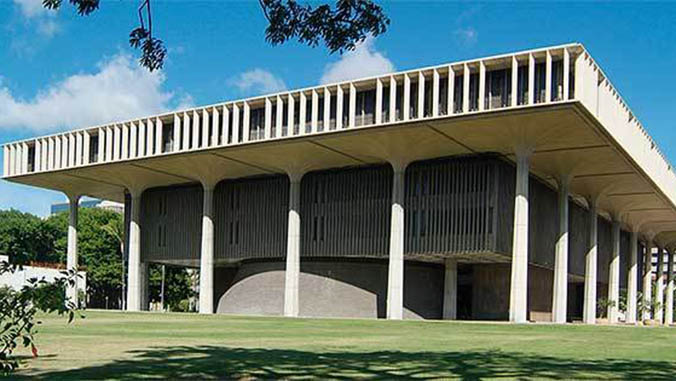
Kalbert Young, University of Hawaiʻi vice president for budget and finance and chief financial officer, shares his analysis of the 2019 legislative session to date.
The Hawaiʻi State Legislature is now in full swing and we are just about half way through the process. The past week concluding March 8, was a major deadline—crossover, where bills that are still alive have had to move onto the other house (senate bills cross over to the House and house bills cross over to the Senate). There were more than 3,100 bills introduced this session and approximately 600 of those bills dealt with the University of Hawaiʻi either directly or indirectly.
Earlier this week, on March 11, the same major deadline was applied to all budget bills. The University of Hawaiʻi Board of Regents had submitted a proposal requesting $26.7 million and $27.2 million in additional general funds for each of the next two fiscal years for university initiatives. For those readers who are familiar with this review each year, I usually provide some status, update and comparison of the university’s budget request and the subsequent legislative progress for funding. This year that will not be possible.
New budget process
The Legislature, primarily the House of Representatives, is utilizing a new budget process this year that has increased the challenge and difficulty in tracking of the budget. The process is much more deconstructed with more moving pieces, so it is not possible to define what budget items are comparably progressing. For example, the House has decided to treat the singular general appropriation bill to fund state government as a “base budget” supposedly to be comprised of funding levels of the current fiscal year, plus any additional funding for agreed upon collective bargaining increases and removing funding for “non-recurring” items. Initially, this may seem like a reasonable approach. However, this “base budget” bill (House Bill 2) does not currently include any funding—current or otherwise—for the University of Hawaiʻi. Other departments are also not funded in this “base budget.” There would be additional bills to serve as vehicles for additional funding for departments.

With the University of Hawaiʻi removed from the “base budget” bill, our budget is instead progressing via a separate appropriation bill, House Bill 1521. A separate bill, House Bill 1522, includes the university’s funding request for additional general funds. Combined, these two bills represent a funding level equal to that in the Board of Regents request from the end of last year. In prior years, there was one budget bill and while it was voluminous, everything related to the operating and capital budgets for all departments was in one place. Since the funding is not included in the current “base budget” bill, it is not possible to compare initiatives and decisions on funding levels because the current process involves multiple bills which are in various stages of the legislative process outside of the “base budget” bill.
As an additional wrinkle, the budget for capital improvement projects (CIP) is also separated from the operating budget and appears to be in House Bill 1259. At this point in time, however, there are no projects for any department listed in House Bill 1259.
At this time, it is unclear as to what the “House position” is on any of the university’s funding requests, so it is not possible to provide the standard comparison between the Board of Regents approved budget and the Legislature’s latest budget for UH. I can point out that House Bill 1521 and House Bill 1522 represent the Board of Regents’ budget request, which appears to be unaltered by the House.
Budget bills
If you want to follow the various bills that are still moving at the Legislature that comprise the major components of the university’s budget, please consider the following:
- HB 2 is the “base operating budget” for most departments in the State. However, the House position of the budget did not include UH as part of HB 2 and UH’s budget is in HB1521 and HB1522. Other departments not included in HB 2 include the DOE, DBEDT, DAGS and Public Safety. The Senate Ways and Means Committee passed HB 2 with amendments to include UH’s base budget.
- HB 116 SD 1 includes additional funding for UH above the base budget of HB 2.
- HB 1521 is the base operating budget for UH and is pending a hearing in the Senate Higher Education Committee.
- HB 1522 appropriates additional funding for those items in the UH Board of Regents’ budget request and is pending a hearing in the Senate Higher Education Committee.
- HB 1259 contains the capital improvement projects for all state governments, including UH, which was passed by the Senate Ways and Means Committee.
- There are also additional appropriation bills introduced by the Legislature that add funding for specific programs not originally included in the Board of Regents request.
Hawaiʻi Promise program

Of good note, the university’s request to expand the Hawaiʻi Promise program to the four-year campuses continues to be the number one initiative of the University of Hawaiʻi and is still progressing at the Legislature via a number of bills.
This program proposes to enhance the number of economically disadvantaged students who can receive financial aid support. The program currently provides last-dollar financial aid to community college students with need.
The university has proposed to expand the program to the four-year campuses. $19.7 million of the university’s $26.7 million and $27.2 million, in each fiscal year is for the Hawaiʻi Promise program. Expanding the program from the community colleges to the four-year campuses will not only make the financial assistance available to bachelor degree seeking students, it will also help existing community college students transition to the four-year campuses by keeping funding available where it has been needed. This expansion will help these students afford the continuation of their education.
Next steps
There is still a ways to go before the Legislature concludes. Even with the dramatic change in the budget process this year, the university and my office have been very engaged with the legislators to ensure that public funding for university programs can continue.
The next major deadline will be the second crossover when bills that are still alive are returned to their originating house. Second crossover will occur the first week of April and then followed by conference committees during the last two weeks of the legislative session. The Hawaiʻi State Legislature is scheduled to adjourn on May 2, 2019.


